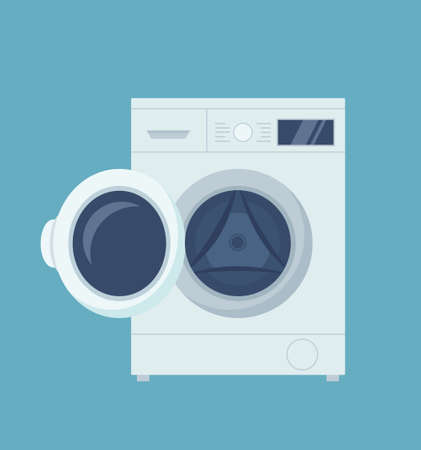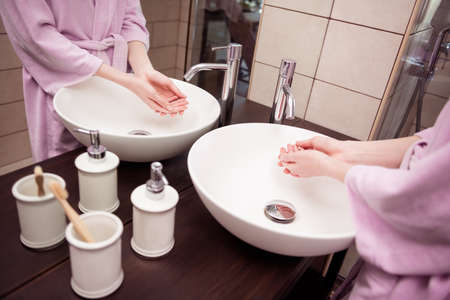1. Understanding the Importance of Bathroom Accessibility for Aging in Place
As more Americans choose to age in place, making homes safer and more comfortable becomes a top priority. Bathrooms are one of the most common places where falls and injuries happen, especially for older adults. That’s why adapting bathrooms for accessibility is not just a trend—it’s a crucial step in supporting independence and safety at home.
Why Bathroom Accessibility Matters
The bathroom is full of slippery surfaces, tight spaces, and high thresholds that can be challenging for seniors or anyone with mobility issues. By improving accessibility, we help reduce risks and create an environment where older adults can take care of themselves with confidence. Accessible bathrooms also offer peace of mind to family members who want their loved ones to stay safe and comfortable at home.
Main Benefits of Accessible Bathrooms
| Benefit | Description |
|---|---|
| Injury Prevention | Non-slip floors, grab bars, and walk-in showers decrease the chance of falls. |
| Independence | Features like raised toilets and lever handles allow seniors to use the bathroom without needing help. |
| Dignity | Accessible design supports privacy and self-care, which boosts confidence and well-being. |
| Future-Proofing | Making changes now means the home will be ready as needs change over time. |
| Added Home Value | Universal design appeals to buyers of all ages and abilities, increasing property value. |
Understanding the Risks Without Adaptation
Without proper modifications, everyday activities like bathing or using the toilet can become difficult or dangerous. Slips on wet floors, trouble getting in and out of tubs, or reaching for items on high shelves are just some of the challenges older adults might face. Simple changes can make a huge difference in daily living and help prevent hospital visits caused by accidents at home.
2. Key Design Principles and Layout Considerations
Universal Design Concepts for Senior-Friendly Bathrooms
When adapting bathrooms for aging in place, universal design is the gold standard. This approach ensures that spaces are safe, accessible, and comfortable for everyone, regardless of age or mobility. Here are the main principles to keep in mind:
- No-step entry: Choose walk-in showers with zero thresholds to prevent tripping.
- Wide doorways and clear floor space: Aim for at least 32 inches of door width and enough room for a wheelchair or walker to turn around (typically a 5-foot diameter turning circle).
- Lever-style handles: Replace round knobs on doors and faucets with lever handles, which are easier to grip and operate.
- Non-slip surfaces: Install non-skid tiles or mats in wet areas to reduce fall risks.
- Reinforced walls: Add blocking behind walls during remodeling so grab bars can be securely installed wherever needed.
Practical Layout Tips for Maneuverability and Comfort
A well-planned layout improves both safety and independence for seniors. Consider these tips when designing or remodeling a bathroom:
| Feature | Recommended Specifications | Why It Matters |
|---|---|---|
| Shower Entry | No threshold, at least 36” wide | Easier wheelchair/walker access; no tripping hazard |
| Toilet Placement | 18” from side wall, raised seat (17-19” high) | Better transfer support, reduces strain on knees/hips |
| Sinks & Vanities | Knee clearance underneath (at least 27” high), rounded corners | Allows seated use; prevents injury from sharp edges |
| Towel Bars & Storage | Within easy reach (36-48” above floor) | Avoids overreaching or stretching, reduces falls |
| Grab Bars | Horizontal & vertical near toilet and shower (ADA: 33-36” height) | Provides sturdy support when standing or sitting down |
| Lighting | Bright, glare-free; nightlights near entry & pathways | Makes hazards easier to see at all hours of day/night |
Maneuvering Space Guidelines by Fixture Type
- Bathe/Shower: At least 36” x 36” for roll-in showers; add seating inside if possible.
- Sinks: 30” x 48” clear floor space in front.
- Toilets: Side approach (for wheelchairs) requires 60” width.
- Main Pathways: Minimum of 36” width throughout the bathroom.
Personalizing for Individual Needs
No two people age exactly the same way. Talk with your loved one—or occupational therapist—about any unique needs or preferences. For example, someone with arthritis may benefit from anti-scald faucets, while another person may need extra shelving within reach. Adjustable features like handheld showerheads or fold-down benches make the space more adaptable as needs change over time.

3. Essential Products and Features for Accessibility
Creating a safe and user-friendly bathroom is key for aging in place. The right products and features can help seniors maintain their independence, reduce the risk of falls, and make daily routines more comfortable. Here are some of the most essential items to consider when adapting a bathroom for accessibility:
Grab Bars
Grab bars are one of the most important safety additions in any accessible bathroom. They provide sturdy support for getting in and out of the shower or tub, standing up from the toilet, and moving around safely. In the U.S., it’s common to see grab bars installed near toilets and inside showers or bathtubs. Choose bars with a non-slip grip and make sure they’re professionally anchored to the wall.
Walk-In Tubs
Traditional bathtubs can be difficult and dangerous to step into as we age. Walk-in tubs offer a safer solution with a door that swings open, making it easy to enter without climbing over a high edge. Many models also include built-in seating and hand-held shower heads for added convenience.
Shower Seats
A shower seat or bench lets individuals sit comfortably while bathing, reducing fatigue and lowering fall risks. Portable shower chairs are available, but built-in benches are often preferred for stability. Pairing seats with handheld shower wands adds further flexibility.
Raised Toilets
Sitting down and standing up from a standard toilet can become challenging with age or mobility issues. Raised toilet seats add extra height, making it easier on joints and muscles. Some models come with integrated armrests for additional support.
Non-Slip Flooring
Slippery floors are a leading cause of bathroom accidents. Non-slip flooring materials—like textured tiles, rubber mats, or adhesive strips—provide much-needed traction even when wet. It’s best to use these materials throughout the bathroom, especially in high-risk areas like showers and near sinks.
Quick Reference Table: Key Accessibility Products
| Product/Feature | Main Benefit | Common Placement |
|---|---|---|
| Grab Bars | Support for balance & transfers | Showers, tubs, near toilets |
| Walk-In Tubs | Easier entry & exit; safer bathing | Tub area |
| Shower Seats | Sit while bathing; reduces fall risk | Showers (portable or built-in) |
| Raised Toilets | Easier sitting/standing; less strain | Toilet area |
| Non-Slip Flooring | Prevents slips & falls | Throughout bathroom, especially wet zones |
Selecting and installing these products not only makes bathrooms safer but also helps older adults stay confident and self-sufficient at home. With thoughtful planning, families can create bathrooms that meet both current and future needs.
4. Best Practices for Installation and Home Modifications
Hiring Certified Professionals
When making bathroom modifications for aging in place, its important to work with certified professionals. Look for contractors who are CAPS (Certified Aging-in-Place Specialist) or have experience in accessible design. Certified professionals understand both safety needs and the latest products available. They can also help you avoid common mistakes that could lead to costly repairs later.
Tips for Finding the Right Professional
| Tip | Description |
|---|---|
| Check Certifications | Ask about CAPS or similar certifications focused on accessibility and senior safety. |
| Ask for References | Contact previous clients to learn about their experiences and satisfaction. |
| Request a Portfolio | See photos of past projects to ensure they have relevant experience. |
| Get Multiple Quotes | Compare prices and services from several professionals before deciding. |
Complying with ADA and Local Building Codes
The Americans with Disabilities Act (ADA) provides guidelines that help make bathrooms safer and more accessible. While private homes arent required by law to follow ADA standards, these guidelines offer valuable direction for anyone looking to improve bathroom accessibility. Its also important to check local building codes, as some cities or states may have additional requirements for home modifications. Working with a professional ensures your project meets all necessary regulations.
Key Accessibility Guidelines to Consider
| Feature | ADA Recommendation | Common Local Code Requirement |
|---|---|---|
| Doorway Width | At least 32 inches wide for wheelchair access | Varies; often similar to ADA standards |
| Grab Bars Placement | Installed near toilet and inside shower at appropriate heights | Some codes require anchoring into studs for safety |
| Shower Entry | No-step, curbless entry preferred for easy access | Might specify minimum dimensions for roll-in showers |
| Sinks & Faucets | Knee clearance under sink, lever handles on faucets recommended | May require anti-scald devices for safety |
Prioritizing Modifications Based on Needs and Budget
No two people have the same needs when it comes to aging in place. Start by listing which bathroom features are most important for safety and independence. Work with your contractor to create a plan that fits your budget but addresses the most urgent concerns first. Small changes like adding grab bars or a raised toilet seat can make a big difference, while larger projects like widening doorways or installing a walk-in tub might require more planning and investment.
How to Prioritize Bathroom Modifications:
| Priority Level | Example Projects |
|---|---|
| High Priority (Safety) | Add grab bars, install non-slip flooring, adjust lighting, raise toilet seat height. |
| Medium Priority (Accessibility) | Replace bathtub with walk-in shower, widen doors, lower sink height. |
| Low Priority (Comfort/Convenience) | Add handheld showerheads, upgrade storage, install heated towel racks. |
If budget is tight, focus on the high-priority items first. Remember, even small updates can help make a bathroom safer and more comfortable for aging in place.
5. Maintenance, Ongoing Assessment, and Resources
Routine Maintenance for a Safe Bathroom
Maintaining a safe bathroom environment is key to supporting aging in place. Regular upkeep helps prevent accidents and keeps assistive products working as intended. Here are some simple maintenance tips:
| Item | Maintenance Tips |
|---|---|
| Grab Bars | Check for looseness; tighten screws every few months. |
| Non-slip Mats | Clean weekly to remove soap residue; replace if worn out. |
| Shower Chairs & Benches | Inspect for cracks or rust; clean after each use. |
| Handheld Showerheads | Check hose connections; clean mineral deposits regularly. |
| Lighting | Replace bulbs promptly; keep fixtures dust-free. |
Periodic Reassessment of Bathroom Safety
As needs change with age, it’s important to reassess the bathroom setup every 6–12 months or after any health event. Here’s how you can approach this:
- Walkthrough: Do a walkthrough with the older adult to identify any new challenges.
- Check Mobility Aids: Ensure walkers or wheelchairs still fit comfortably through doorways and around fixtures.
- Ask for Feedback: Talk with caregivers or family members about any recent difficulties or incidents.
- Update Features: Add or adjust products like raised toilet seats, shower grab bars, or motion-sensor lights as needed.
Checklist for Reassessment
| Question | If “No”, Consider… |
|---|---|
| Is the floor dry and free from clutter? | Add storage solutions or anti-slip mats. |
| Are grab bars secure and easy to reach? | Tighten or reposition bars. |
| Is lighting bright enough at night? | Add nightlights or brighter bulbs. |
| Can the user access faucets easily? | Add lever handles or touchless faucets. |
U.S. Resources for Aging in Place Support and Funding
If you need help making your bathroom safer, there are many resources available across the United States:
- AARP (American Association of Retired Persons): Offers guides and checklists for home modifications (see their resources here)
- The National Association of Home Builders (NAHB) – CAPS Program: Certified Aging-in-Place Specialists can provide expert advice on bathroom adaptations (find a specialist here)
- Aging and Disability Resource Centers (ADRCs): Connects seniors and families with local services, including funding options (locate your ADRC here)
- Medicaid Home Modification Programs: Some state Medicaid programs may help cover costs for safety equipment—check your state’s program details.
- Veterans Affairs (VA): The VA offers grants like HISA (Home Improvements and Structural Alterations) for eligible veterans needing accessible bathrooms (learn more here)
- Local Nonprofits & Area Agencies on Aging: Many offer free home safety assessments or minor modification assistance—search by city or county online.
Caring for Yourself and Your Loved Ones at Home
A safe, well-maintained bathroom helps support independence and peace of mind for older adults living at home. Remember, regular checks and knowing where to find help can make all the difference as needs change over time.


